Reign 1558–1571 House Kingdom of Tondo Successor Agustin de Legaspi Children Magat Salamat | Name Lakan Dula Died 1589 Role Prince | |
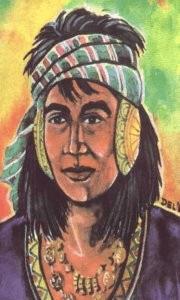 | ||
Issue Dionisio Capulong ("Batang Dula")Magat SalamatPhelipe SalongaMaria PoloinMartin LakandulaLuis Taclocmao(sometimes referred to as Luis Salugmoc) Religion Roman Catholicism(formerly Animism or Islam) Similar Rajah Sulayman, Rajah Matanda, Magat Salamat | ||
Sweet potato band lakandula battle of the bands movie pic
Lakan Dula (Baybayin: ᜎᜃᜈ᜔ ᜇᜓᜎ, Abecedario: Lácandólá) was the regnal name of the last Lakan (king or paramount ruler) of the pre-colonial Kingdom of Tondo when the Spaniards first conquered the lands of the Pasig River delta in the Philippines, in the 1570s.
Contents
- Sweet potato band lakandula battle of the bands movie pic
- Eulogy and conferment posthumous of the order of lakandula
- Name and Title
- Etymology of Lakandula
- Lakan instead of Rajah
- Life before the arrival of the Spanish
- Arrival of Legazpi May 1571
- The Battle of Bangkusay June 1571
- Expedition to Pampanga and Bulacan late 1571
- Attack by Limahong 1574
- Death
- Children
- Later descendants
- Legacy
- References
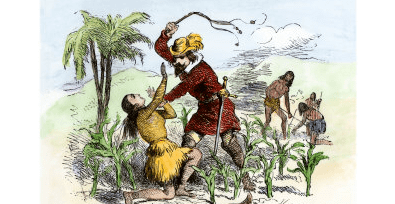
The firsthand account of Spanish Royal Notary Hernando Riquel says that he introduced himself to the Spanish as "Bunao Lakandula", indicating that his given name was "Bunao". However, the word Lakan which in current Tagalog form means gentleman, was a title equivalent to prince meaning he was Prince Dula. He later converted to Christianity and was baptised Carlos Lakandula. Another common variation of the name is Gat Dula (alternatively spelled as a single word, Gatdula). He is sometimes erroneously referred to as Rajah Lakandula, but the terms "Rajah" and "Lakan" have the same meaning, and in this domain the native Lakan title was used, making the use of both "Rajah" and "Lakandula" at the same time redundant and erroneous.

Along with Rajah Matanda and Rajah Sulayman, he was one of three Rajahs who played significant roles in the Spanish conquest of the kingdoms of the Pasig River delta during the earliest days of the Philippines' Spanish colonial period.
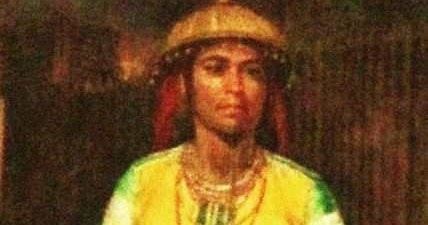
While it is unclear whether the entire name "Lakandula" represented a single titular name during his own lifetime, a few of his descendants in the first few generations after his death came to refer to themselves as the "Lakandula of Tondo", taking that name on as a noble title.
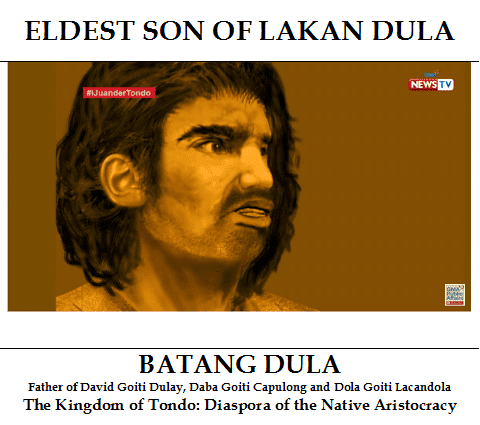
Eulogy and conferment posthumous of the order of lakandula
Name and Title
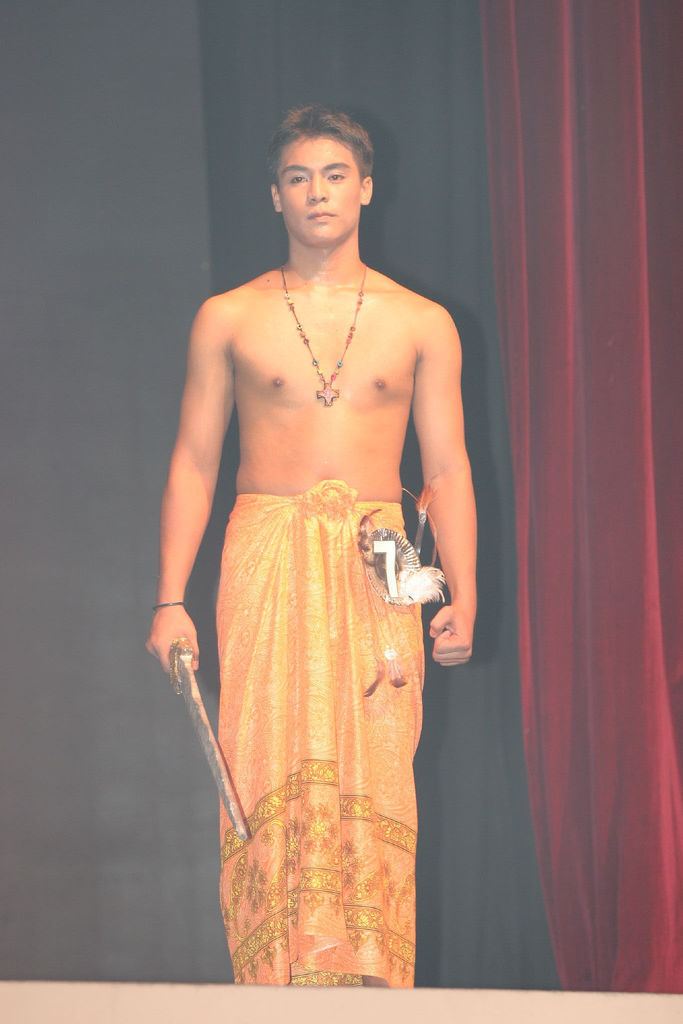
Over time, Lakandula's name has come to be written in several ways. However, according to the firsthand account written by Hernando Riquel, the royal notary who accompanied Miguel Lopez de Legazpi, the Lord of Tondo specifically identified himself as "Sibunao Lakandula, lord of the town of Tondo" when he went onboard Legazpi's ship with the Lords of Manila on May 18, 1571. The lords of Manila introduced themselves as "Rajah Ache the Old and Rajah Soliman the Young, lords and principals of the town of Manila"

In page 13 of "Cracks in the Parchment Curtain", preeminent historian William Henry Scott quotes Riquel's original text, which he found in the Spanish archives under "Archivo General de Indias Seccion Patronato leg. 24, no 24." The relevant part of the text read:
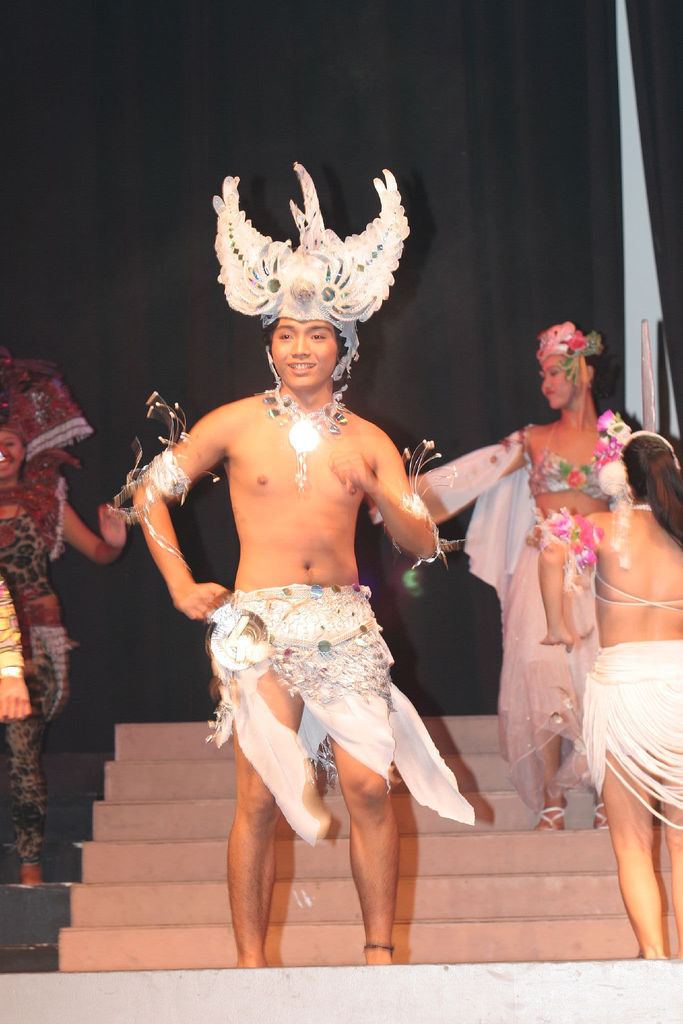
...declaracion llamarse Raha Ache el Viejo y Raha Solimane el Mozo, senores y principales del pueblo de Manila, y Sibunao Lacandola, principal del pueblo de Tondo...(emphasis added)

Historians routinely remove the Filipino linking verb "si", analogous to the English "am", from recorded names in this era, because Spanish writers who had not yet learned the local languages often mistakenly attached it to Filipino names. Historians thus record that the Lakan introduced himself as "Bunao Lacandola."
Etymology of "Lakandula"
Banaw was the given name of the lord of Tondo at the time of the Spanish advent, and his title "Lakan" refers to a monarch and was the equivalent of "Rajah" or "King". This leaves the matter of the addendum "dula" to be settled. This could not have been a family name such as Filipinos use today, because family names were only introduced to the Filipino culture later, by Governor General Narciso Clavería y Zaldúa on November 11, 1849. Historian Jose N. Sevilla y Tolentino, however, suggested that Dula was not a personal name at all, but a local word for "Palace," such that "Lakandula" was the local-language title, "Lord of the Palace" of the rulers of Tondo. Analogously, Rajah Ache was also referred to as Rajah Matanda (Old Rajah), while Rajah Sulayman was sometimes referred to as Rajah Muda or Rajamora (Young Rajah).
In the Gatdula variant of the name, the word or prefix Gat is a shortened version of the Tagalog honorific "Pamagat", which at the time meant "nobleman," such that the variant literally read "Nobleman of the Palace", which meant essentially the same thing as the Kapampangan version.
In any case, most contemporary historians continue to refer to him as Lakandula. Where historians such as Dery and Scott explain that his given name is Banaw, they then continue to refer to him as Lakandula. Joaquin does something similar, explaining that the Lakan's given name is Banaw, and then proceeding to call him Lakan Dula (separate words) throughout his "Manila, My Manila" manuscript.
"Lakan" instead of "Rajah"
With the term "Rajah" and "Lakan" meaning the same thing, the "Rajah Lakandula" variation of the title was also never used in the original sources pertaining to Lakan Dula, and Filipino historian and national artist for literature Nick Joaquin takes pains to point out that the term Lakan, not Rajah, was used by the rulers of the Kingdom of Tondo.
Life before the arrival of the Spanish
Little is known about the early life of Banaw Lakandula before the arrival of Legazpi. According to National Artist Nick Joaquin "he is presumed to be of native birth," with mixed Tagalog and Kapampangan descent. Joaquin adds that "He was said to be a descendant of King Balagtas."
Joaquin further speculates on Lakandula's religious beliefs:
"Tondo's Lakan Dula may have been unusual in being neither foreign nor muslim. This was indicated by his use of the native term Lakan instead of the foreign title Rajah. Lakan dula can be presumed… to have been reared in the anito cults. One guess is that he converted to islam, then changed his mind and returned to his native faith."
Joaquin also expounds on the economic context of Lakandula's reign over Tondo:
"Tondo had replaced Namayan as the chief port of entry on Manila Bay. Tondo was right on the seaside. This was the advantage it had over Namayan, which was upriver inland. So the merchant ships that came into the bay preferred to unload their goods at the port of Tondo. And now it was the king of Tondo who was responsible for sending the merchandise upriver to the lakeside communities, there to be traded for local products. Tondo was thus the distributing center, or entrepot, on the delta... At the time of Lakan Dula, Tondo was at the height of its career as an entrepot…."
According to Scott (1982), when ships from China came to Manila bay, Lakandula would remove the sails and rudders of their ships until they paid him duties and anchorage fees, and then he would then buy up all their goods himself, paying half its value immediately and then paying the other half upon their return the following year. In the interim, he would trade these goods with peoples further upstream, the end result being that other locals were not able to buy anything from the Chinese directly, but from Lakandula, who made a tidy profit as a result.
William Henry Scott notes that Augustinian Fray Martin de Rada Legaspi says that the Tagalogs were "more traders than warriors", and elsewhere notes that Maynila's ships got their goods from Tondo and then dominated trade through the rest of the archipelago. People in other parts of the archipelago often referred to Maynila's boats as "Chinese" (Sina or Sinina) because they came bearing Chinese goods.
Arrival of Legazpi, May 1571
When Miguel Lopez de Legazpi came to Manila Bay in May 1571, Lakandula was there to meet him. The two first met on May 17, the day after Legazpi's arrival on the bay, when Lakandula and Rajah Matanda came aboard Legazpi's ship to discuss terms with him. Part of these discussions specified that the Spanish would not land in Tondo, and would instead land in Maynila, which had been burned to the ground the year before. Joaquin suggests that Lakandula would "have seen that Legaspi was being practical. Burned down and emptied, Maynila would be a better spot to fortify, being more strategic."
On May 18, 1571, Rajah Sulayman, Rajah Matanda, and Lakan Dula acknowledged the sovereignty of Spain over the islands and proclaimed themselves the vassals of Spain. On the following day, May 19, Legazpi landed in Manila and took ceremonial possession of the land in the presence of Soliman, Matanda, and Lakandula.
Lakandula helped make a house for Legazpi, and a fort for the Spanish, giving them fourteen pieces of artillery and twelve jars of gunpowder, a gift much appreciated by the Spanish, who were running low on ammunition.
Soon after, Lakandula and his sons became baptized as Catholics. The Spanish had Manila's artillery and arquebuses discharged in honor of the ceremony. Bunao Lakandula took on the name Don Carlos Lacandola after Charles I of Spain.
The Battle of Bangkusay, June 1571
It wasn't long before Spanish power in Luzon was challenged. A month later, Tarik Sulayman of Macabebe attacked Manila, convincing Rajah Sulayman to join the battle against Legazpi. Macabebe and Sulayman's forces were defeated, and the Datu of Macabebe was killed in what history would record as the Battle of Bangkusay Channel. (The similarity of names has caused some confusion between these two leaders, but Tarik Sulayman and Rajah Sulayman were different individuals - one survived the battle, and the other did not.)
Lakandula had refused to join Macabebe and Sulayman's coalition, but among the prisoners taken by the Spanish after the battle were two of his nephews and a number of his officers. When questioned, they said that they had been on the scene only as observers, not as combatants. Legazpi let them go to demonstrate his confidence in Lakandula.
Joaquin notes that this was a wise choice on Legaspi's part:
"If he had been playing a double game before, Lakan Dula now became earnest in supporting the Spanish. It may be he who persuaded the fugitive Soliman to surrender and return to the good graces of Legazpi."
Expedition to Pampanga and Bulacan, late 1571
Later that year, Legaspi sent Martin de Goiti to spread Spanish rule to the peoples of what are now the provinces of Bulacan and Pampanga, particularly the territories of Lubao with Macabebe, Guagua on September 14, 1571. One month later they conquered Calumpit and Malolos in November 14 of the same year. Legazpi conceded these settlements under Spanish rule. He sent Lakandula and Sulayman with him, because, as one account has it, "if so great a chief should go with him, when the Tagalogs and Pampangos saw that he had given obedience to His Majesty, they would give it also."
The account continues:
"Lacandola agreed to go, and served with two ships provided at his cost, and distinguished himself by performing much service for His Majesty, and went along so the said Pampangos would give him obedience, as in fact they did."
These boats were Joangas, a type of seacraft capable of carrying 300 men each, which, as Dery points out, were common in Maritime Southeast Asia.
Attack by Limahong, 1574
Lakandula's close association with the Spanish continued despite Legaspi's death on August 20, 1572 and his replacement as Governor by Guido de Lavezares, who had been the colony's treasurer. Lakandula was on hand to help repel the invading corsair Limahong when he came to try and sack Manila in 1574.
Death
Mentions of Lakandula's death are few, but Scott indicates that he died in 1575, "three years after" Legazpi and Rajah Matanda, who both died in 1572.
Lakandula's role as ruler of Tondo was then taken up by his grandnephew, and Rajah Soliman's adopted son, Agustin de Legazpi.
Agustin de Legazpi, who was married to the cousin of Sultan Bolkiah, would lead Tondo as a territory under Spanish rule until he rose up against them in 1587–1588 Revolt of the Lakans, and was deposed and killed as a result.
According to Fray Gaspar de San Agustin in "Conquistas de las Islas Filipinas 1565–1615", as cited by Kimuell-Gabriel (2013), Lakandula had ruled Tondo from an elevated site near Manila bay, facing the shore and fronted by fishermen's dwellings. According to local oral histories, this site eventually became the site of the Sto Niño of Tondo Parish church.
Children
Lakan Dula was the most prolific of Luzon's ancient rulers. His descendants are spread out all across the Kapampangan Region during the Spanish colonial era. He fathered at least six children:
Later descendants
In 1990, Filipino historian Luciano P.R. Santiago wrote an article for the Philippine Quarterly of Culture and Society which details the identities and life stories of some of the descendants of Lakan Dula, mostly based on a 1589 document known as the "Will of Fernando Malang Balagtas", which is part of the "Lacandola Documents" of the Philippine National Archives. The document had been issued by the individual known as Fernando Malang Balagtas to affirm his own claim as descendant of Lakan Dula so that his descendants could in turn continue to enjoy the special privileges offered by the Spanish crown to Lakan Dula and his descendants.
Another Filipino historian, Luis Camara Dery, quotes significant portions of the 1589 document in his book "A History of the Inarticulate", while William Henry Scott cites the document in several publications, notably his book "Cracks in the Parchment Curtain and Other Essays in Philippine History." Dery notes that this "Will of Fernando Malang Balagtas" has thus become a major documentary resource regarding the supposed later descendants of Lakan Dula.
Santiago recounts that these privileges had been discontinued for a while in the aftermath of Lakan Dula's death, because some of the descendants came into conflict with the Spanish authorities. According to Santiago and Dery, the Balagtas document recounts that these privileges were restored when a Juan Macapagal, who claimed to be a great grandson of Lakan Dula (through Dionisio Capulong's son Juan Gonzalo Capulong), aided the Spanish authorities in suppressing the 1660 Maniago revolt, the 1660-61 Malong revolt, and the 1661 Almazan revolt, performing his role as Master-of-Camp and Datu of Arayat.
In 1758, A Gremio de Lakandulas was created to safeguard the rights and privileges of the Kapampangan descendants of Lakan Dula as assured by the Spanish crown. During the British invasion of 1762–64, the descendants of Lakan Dula, concentrated in the province of Pampanga, formed a company of volunteers to fight the British and were granted autonomy by Governor General Simon de Anda.
By Santiago's genealogical reckoning, prominent Lakan Dula descendants of the 20th century include the former Philippine Presidents Diosdado Macapagal and Gloria Macapagal-Arroyo, former Philippine Senate President Jovito Salonga, international stage celebrity Lea Salonga, pioneer Filipino industrialist Gonzalo Puyat, and former Philippine Senate President Gil Puyat.
